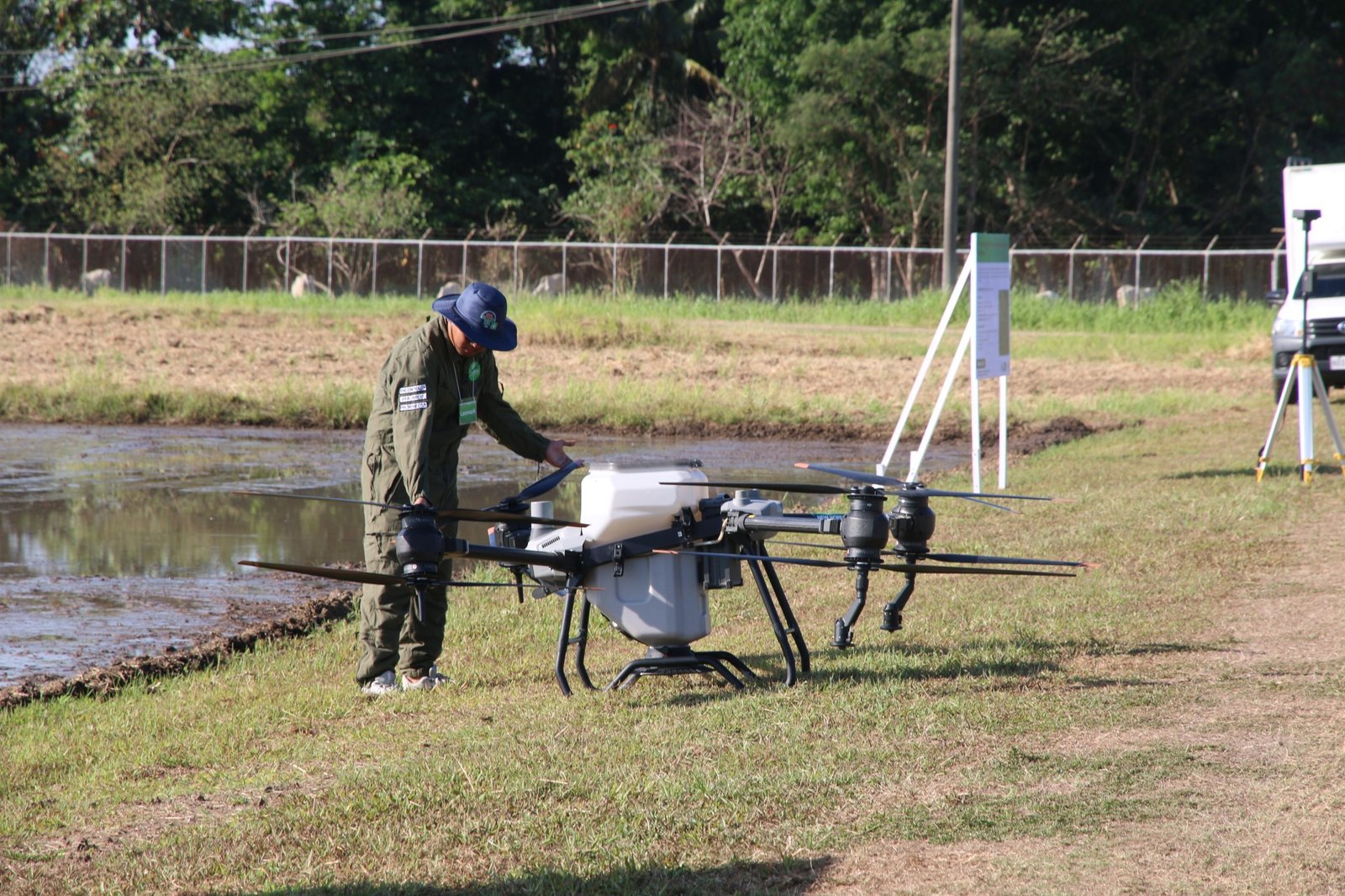Thursday, 11 December 2025

The Drones4Rice Project will craft standardised protocols for drone applications of seeds, fertilizers, and pesticides for rice production in the Philippines.
Aimed at leveraging the power of drone technology to boost farmers’ productivity and sustainability, the International Rice Research Institute (IRRI) and the Department of Agriculture – Philippine Rice Research Institute (DA-PhilRice) have launched the Drones4Rice Project during the Inception Workshop held at the IRRI Headquarters in Los Baños, Laguna on 16-17 April 2024.
The Drones4Rice Project will craft standardized protocols for drone applications of seeds, fertilizers, and pesticides for rice production in the Philippines. Implementing optimized protocols and streamlined regulations will enable the private sector to scale affordable drone services to farmers. The initiative holds significant potential for elevating farmers’ productivity, income, and resilience by advocating precision agriculture and sustainable rice farming practices.
The project also plans to set up a drone-based system to monitor crops, and map weeds and nutrient levels in rice fields to develop a new method for adjusting nutrient and weed management during the growing season, as well as scaling up sustainable drone-based precision farming technologies and finding ways to adopt them widely at the farm cluster level.
Drones serve various agricultural purposes, including irrigation planning, crop health monitoring, damage assessment, soil health analysis, and fertilizer and pesticide application. Equipped with advanced sensors, they can provide real-time data to detect moisture levels, assess crop health, and optimize resource management, helping enhance productivity and reduce labor costs.
Across Asia, drones are employed in agricultural regions of China and Japan and are increasingly gaining traction in neighboring nations like Thailand, Indonesia, and Vietnam. In the Philippines, use of drones in agriculture is at its early stages and this multi-stakeholder partnership aims to accelerate access to this technology by smallholder farmers.
One of the reasons cited for the large difference in rice production cost between the Philippines and major rice exporting countries is labor cost – accounting for about a third of the total rice production costs. Mechanization and a shift toward precision agriculture can significantly drive the rice production cost to go down.
“Precision agriculture, including the use of drone technology, can optimize input usage like seeds, fertilizers, and pesticides, leading to higher yields and cost efficiency,” said IRRI Senior Scientist Stephen Klassen, one of the project leads.
“Drones4Rice emphasizes the rice industry’s need to adapt to emerging trends and technologies, with digital transformation being a key strategy of the Masagana Rice Industry Development Program. It is crucial for our industry to stay current,” Engr. Christopher V. Morales, DA Undersecretary for Rice Industry Development, said during the event.